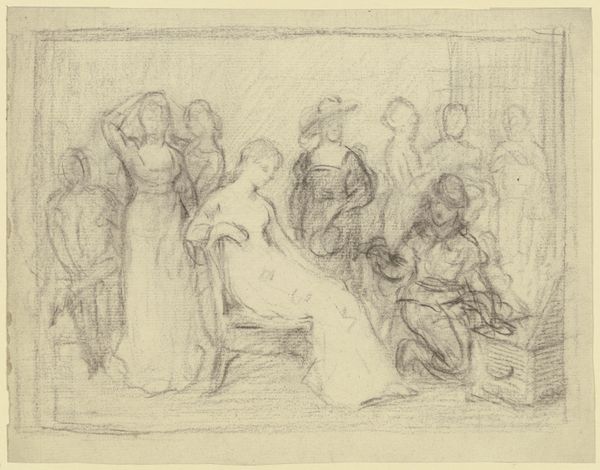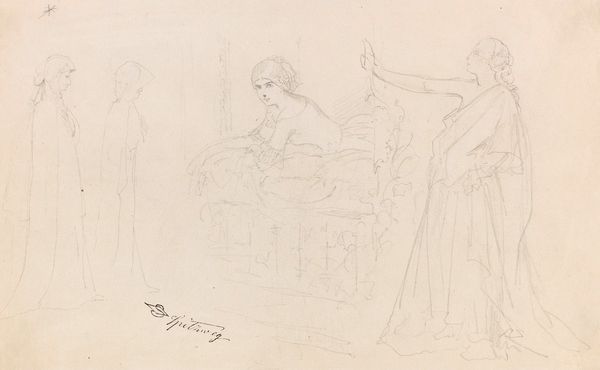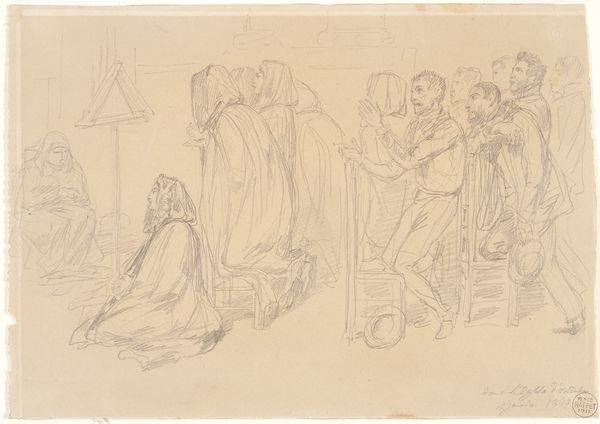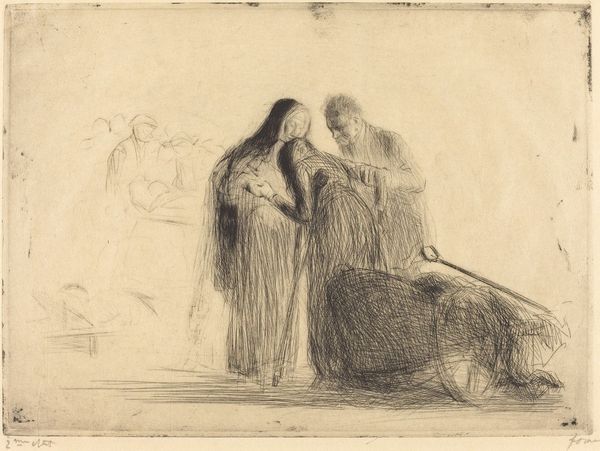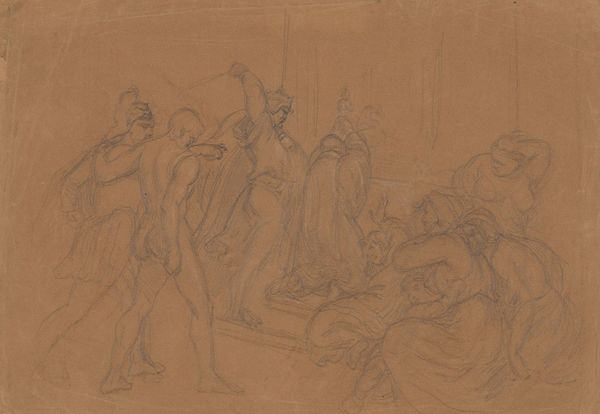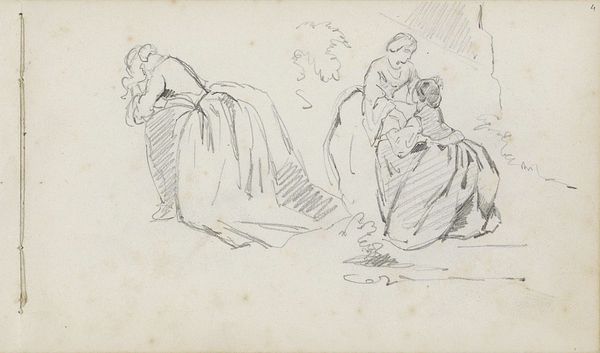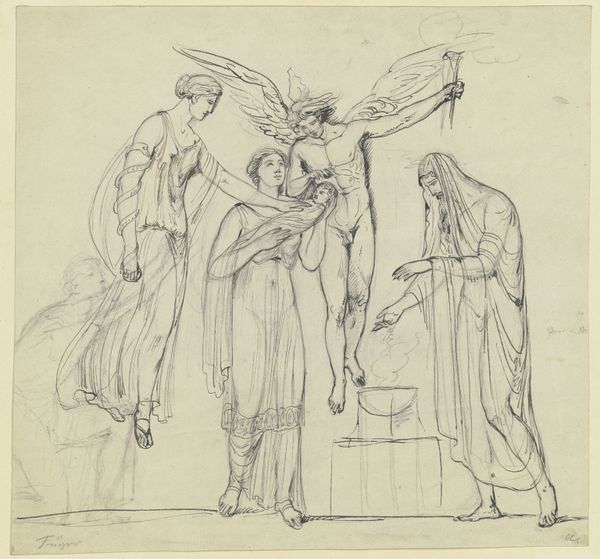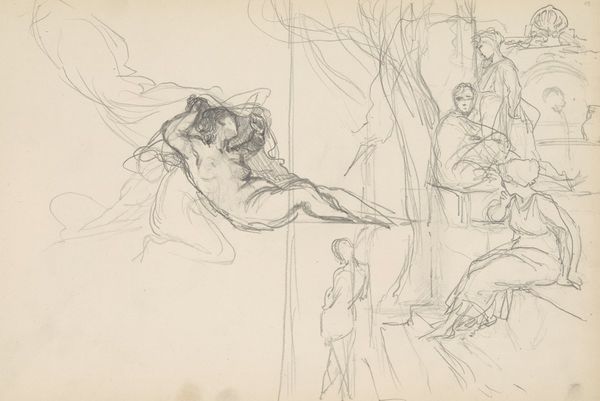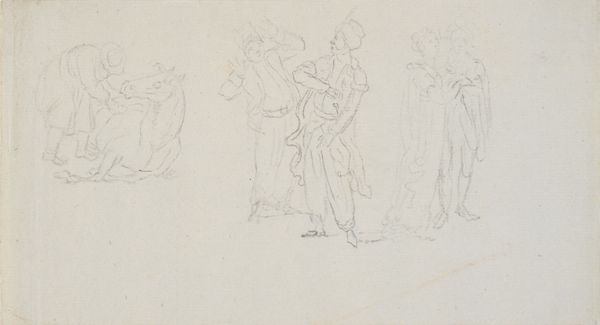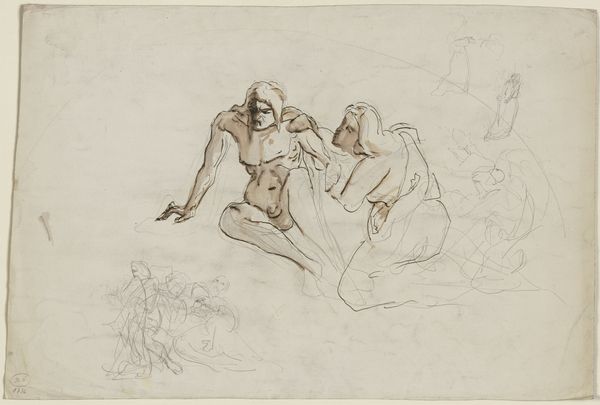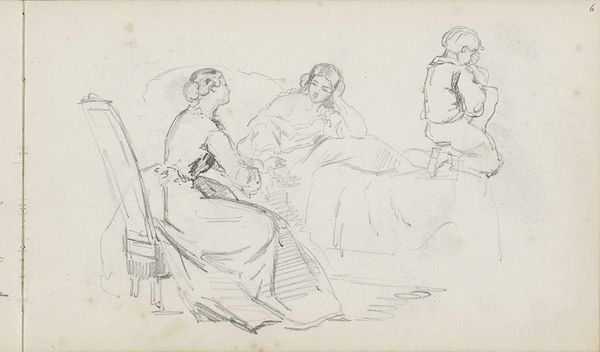
‘Od Polek’ – szkic kompozycji przedstawiającej apoteozę króla Jana III Sobieskiego 1883
0:00
0:00
Copyright: Public Domain: Artvee
Curator: Here we have a pencil drawing on paper by Henryk Siemiradzki, dating back to 1883. It's titled "'Od Polek' – szkic kompozycji przedstawiającej apoteozę króla Jana III Sobieskiego." Editor: My goodness, it's quite ethereal, isn't it? All these floating figures. A bit chaotic, too – a flurry of graphite on a ground the color of old parchment. You can almost feel the artist thinking aloud, testing out poses, arrangements. Curator: Exactly! It is a study for a larger, more formal piece— a glimpse into the artist's process. We see the beginnings of what was intended to be a grand historical statement honoring King Jan III Sobieski. The man famous for routing the Ottomans at Vienna. Editor: All that sketched pageantry… Makes you think about how art often serves power, doesn’t it? All those pencils and paper must’ve cost a fair amount. Curator: Very true. And Siemiradzki was a master of academic art, celebrated in his time. His style fits right into that 19th-century penchant for historical grandeur, Romanticism in its sweep, Academic in its dedication to meticulous realism and details in costume. The final composition no doubt a statement, indeed. Editor: All that painstaking effort. It also draws my eye to the sheer amount of human labor required, from milling the graphite and pulping the paper, to sitting at a desk hunched over, day in and day out to complete that final masterwork, if he got that far. Curator: An intriguing thought. While the finished paintings would evoke those heroic historical narratives, here we have an artifact of all of the artist’s labor. You could almost say it is more revealing in some ways. This glimpse behind the curtain exposes more, invites us in as active viewers to wonder what came to be. Editor: Right. In the end, what moves me is that a pencil drawing remains such an accessible, tangible artifact, really laying bare that intimate dance between material, labor, and the very production of history. Curator: Yes. In this unfinished quality, there's a poignant reminder of the transient nature of even the most grandiose historical claims and artistic aspirations. Editor: Food for thought.
Comments
No comments
Be the first to comment and join the conversation on the ultimate creative platform.
